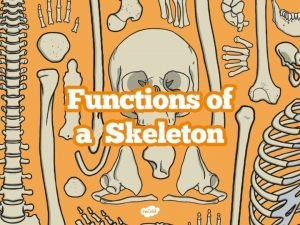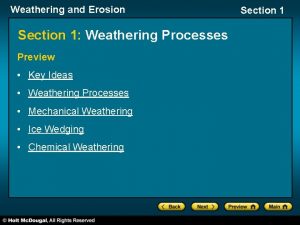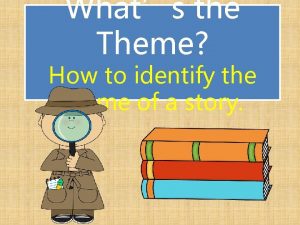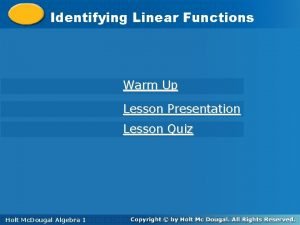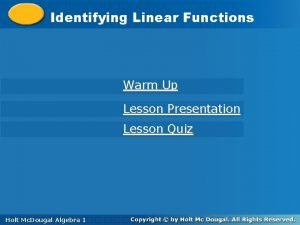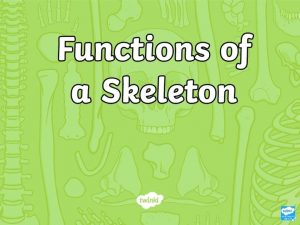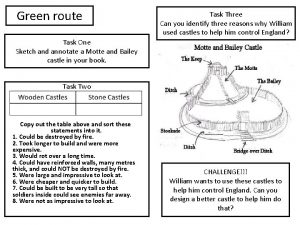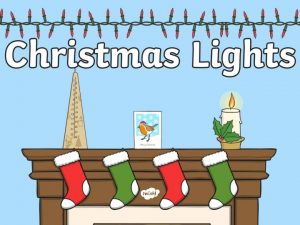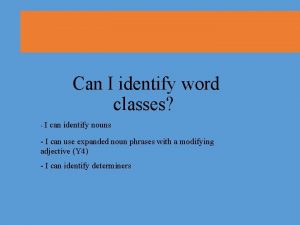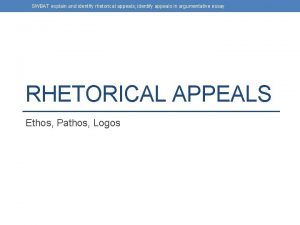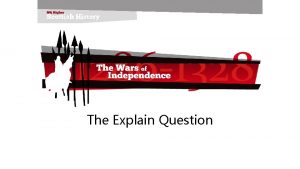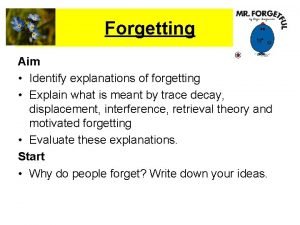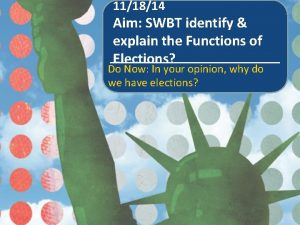Aim I can identify and explain the three











- Slides: 11


Aim • I can identify and explain the three main functions of a skeleton. Success Criteria • I can identify parts of the skeleton that protect the body. • I can identify parts of the skeleton that support the body and help it move. • I can explain how different parts of the skeleton work.

Purpose of a Skeleton Think about the following questions: 1 Why do we have skeletons? 2 What would happen if we did not have a skeleton?

Protection Have a go at the Science Activity Sheet Only colour in the bones in the skeleton that protect

Whose Skeleton? human dog horse snake fish

All Fall Down! One of the functions of a skeleton is to support your body. What would happen if you had no bones in your body? Which part of the skeleton keeps your body upright? On your activity sheet using a different coloured pencil, colour in the main bones that keep your body upright.

Movement Try and pick your pencil up like the first picture, then like the second. What happened when you tried to pick up a pencil the first time and the second time?

Joints Without joints connecting our bones we would not be able to move the way we do. We would not be able to bend, jump, skip to name a few movements. There are 3 different types of joints in the body. (Click the pictures to see how they move!) ball and socket hinge gliding Ball and socket joints allow the most freedom of movement. One example in the human skeleton is the between the pelvis (hip) and femur (upper leg bone). Hinge joints allow flex and extend movements. One example in the human skeleton is between the humerus (upper arm bone) and radius/ulna (lower arm bones). Gliding joints are also known as ‘plane’ joints. The bones are shaped to glide over one another and allow for small limited movements in different directions. One example in the human skeleton is the wrist bones.

Skeleton Functions Complete the Skeleton Functions activity sheet

Skeleton Types and Functions of a Skeleton Types of Skeleton protection endoskeleton exoskeleton hydrostatic skeleton support shape movement

Aim • I can identify and explain the three main functions of a skeleton. Success Criteria • I can identify parts of the skeleton that protect the body. • I can identify parts of the skeleton that support the body and help it move. • I can explain how different parts of the skeleton work.
 Identify and explain
Identify and explain Regulatory signs examples
Regulatory signs examples Explain three ways in which
Explain three ways in which Optional element in business letter
Optional element in business letter Process of business research
Process of business research Identify and explain
Identify and explain Identify three agents of mechanical weathering
Identify three agents of mechanical weathering Three types of general winds s190
Three types of general winds s190 How to identify themes in a story
How to identify themes in a story How can you identify a linear function
How can you identify a linear function How can you identify a linear function
How can you identify a linear function The image viewers can easily identify in an art work
The image viewers can easily identify in an art work
